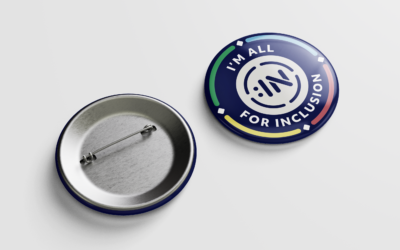Jamillah Boyd is an Assistant Teaching Professor of Information Systems and Technology. She earned an M.Ed. in Adult and Higher Education, a BIS in Business & Information Systems, and is a current doctoral candidate at the University of Missouri — St. Louis (UMSL). Professor Boyd also holds a Master of Library and Information Science degree from the University of Missouri. In addition to supporting students in the classroom, she serves as faculty advisor to UMSL’s Information Systems & Technology Mentoring Club. She supports diversity in STEM as a faculty advisor for the Missouri Louis Stokes Alliance for Minority Participation program and is a member of the innovation team. Prior to joining the Information Systems and Technology faculty full-time, she served as senior project coordinator and adjunct faculty of information systems with UMSL’s College of Business Administration.
We spoke with Jamillah to learn more about her career path, what she sees as some of the greatest opportunities to create a more equitable tech industry, and what inspires her as she looks to the future.
Hi Professor Boyd! Tell us about yourself — how did you get to where you are today?
I was passionate about technology after my introduction to the Macintosh IIx in high school and I took advantage of every opportunity that allowed me to interact with technology. A course I took on information systems concepts and applications changed the trajectory of my career. I completed the course as professional development for work. At the time, I worked in higher education, and the course inspired me to utilize technology as a solution to manage, organize, and streamline my work. I held several roles where I was able to enhance my work by taking courses in information systems and business. Eventually, my role transitioned to a senior project coordinator in a business college. In this role, I was able to use my passion for emerging technologies to support faculty and staff.
After attending graduate school, I started teaching in an adjunct capacity, which ultimately led to a full-time appointment. I was excited to lead the course that changed the trajectory of my career. I can say that I arrived at where I am today by taking advantage of continuing education and professional development opportunities.
You are an Assistant Teaching Professor of Information Systems and Technology at the University of Missouri — St. Louis. What is a day on the job like for you and what are some of the initiatives you lead?
My day to day varies, but much of my time is spent working online. I appreciate the ability to utilize technology to connect with students and peers around the world. I prefer to compartmentalize my day to give each area my full attention. I like to spend the first part of the day addressing the needs of students. This may entail responding to emails, virtual meetings about coursework, career advice, and in some cases, students just like to check-in. I also spend a lot of time creating and adjusting the content for my course. I always try to put myself in the shoes of the student. I invest time in developing content that is accessible to students from varying backgrounds. I believe equity in the classroom starts with the content. I spend the remainder of the day focused on my research and studies.
I believe a comprehensive approach is needed to meet the needs of students so they can succeed. Beyond the classroom, I work with several initiatives to develop students and prepare them for further study and the workforce. Within my college, I serve as the faculty advisor for our Information Systems & Technology Mentoring Club. The IS&T Mentoring Club is dedicated to enhancing student’s industry perspective and professional networks. Also, I serve as a faculty advisor for the Missouri Louis Stokes Alliance for Minority Participation (MOLSAMP). MOLSAMP is under the umbrella of the Louis Stokes Alliance for Minority Participation. The LSAMP program is a National Science Foundation funded program intended to support historically underrepresented students in the STEM fields.
You are also a member of the Board of Trustees at AnitaB.org, an incredible organization dedicated to supporting women in tech. What inspired you to get involved with the organization?
In 2015, I had the opportunity to attend the Grace Hopper Celebration of Women in Computing as a volunteer. As a celebration volunteer, I was able to see the work behind the scenes and the impact of the event on the community. This volunteer opportunity opened my eyes to all the programming offered by AnitaB.org to advance women technologists. I believed in the mission of AnitaB.org and I wanted to find a way to meaningfully contribute. When I learned about the graduate student board opportunity, I felt it would be a great opportunity to contribute to the organization’s mission. I hoped to bring a different perspective to the board as a faculty member and doctoral candidate. I am in the second year of my term, and the experience has been invaluable. I have had the opportunity to learn from great leaders in the technology industry.
At Noun Project, we believe visual language has the power to shape, reinforce and change perceptions. What are your thoughts on why diverse visual representation in tech is important to help change the status quo in the industry?
Visual representation in tech is extremely important because it creates the narrative for youth as they begin to explore fields of study and future careers. Visual representation is important to all STEM areas because science and technology are major drivers of our economy.
People from underrepresented groups need to understand that consuming technology is not what gets you a seat at the table. Creating technology will be one of the keys to nudging the needle toward equity in tech. I say that creators can only nudge the needle toward tech equity because there are still many tech organizations that lack a workforce that mirrors their consumers. It’s only fair to have a proper representation of people from all walks of life in any industry. Visual representation in tech is the mirror that can help with the mind shift from consuming video games to creating video games and from consuming applications to building applications.
What are some of the greatest opportunities you see right now to drive meaningful change when it comes to more equitable representation in tech?
Right now, I think our greatest opportunity is to create a more equitable infrastructure for K-12 and postsecondary education. Equity issues in education have existed throughout the history of the education system. Early childhood and secondary education opportunities can set the foundation for academic and professional career paths. Equity in education, more specifically STEM education, can lead to more equitable representation in tech.
Looking to the future, what inspires you and what initiatives are you most excited about right now?
I am inspired by student success and new ways to deliver more effective teaching for all learners. I am excited by the changes I see with remote learning, online instructional design, and emerging course delivery tools. The concept of education is becoming detached from a physical space which creates more opportunities for students to learn. The walls of the physical classroom are no longer barriers as technology enables more ways for faculty and students to connect.
What advice would you give to women who are currently navigating the path to a career in tech?
The advice I would offer to women currently navigating the path to a career in tech is to look for opportunities you are passionate about and where you can play to your strengths daily. Also, I suggest finding a supportive community. Many women have faced the same issues and challenges navigating the industry and can provide valuable feedback and advice. Membership organizations like AnitaB.org offer a safe space to connect with others. Finally, seeking help should be a reciprocal act. As you grow in the field, make sure you are nurturing students and women entering the field. Mentoring and nurturing are extremely important to help build a more diverse and inclusive technology workforce.
Thank you for sharing with us!
About AnitaB.org
AnitaB.org connects, inspires, and guides women in computing, and organizations that view technology innovation as a strategic imperative. Its social enterprise supports women in technical fields, as well as the organizations that employ them and the academic institutions training the next generation.




